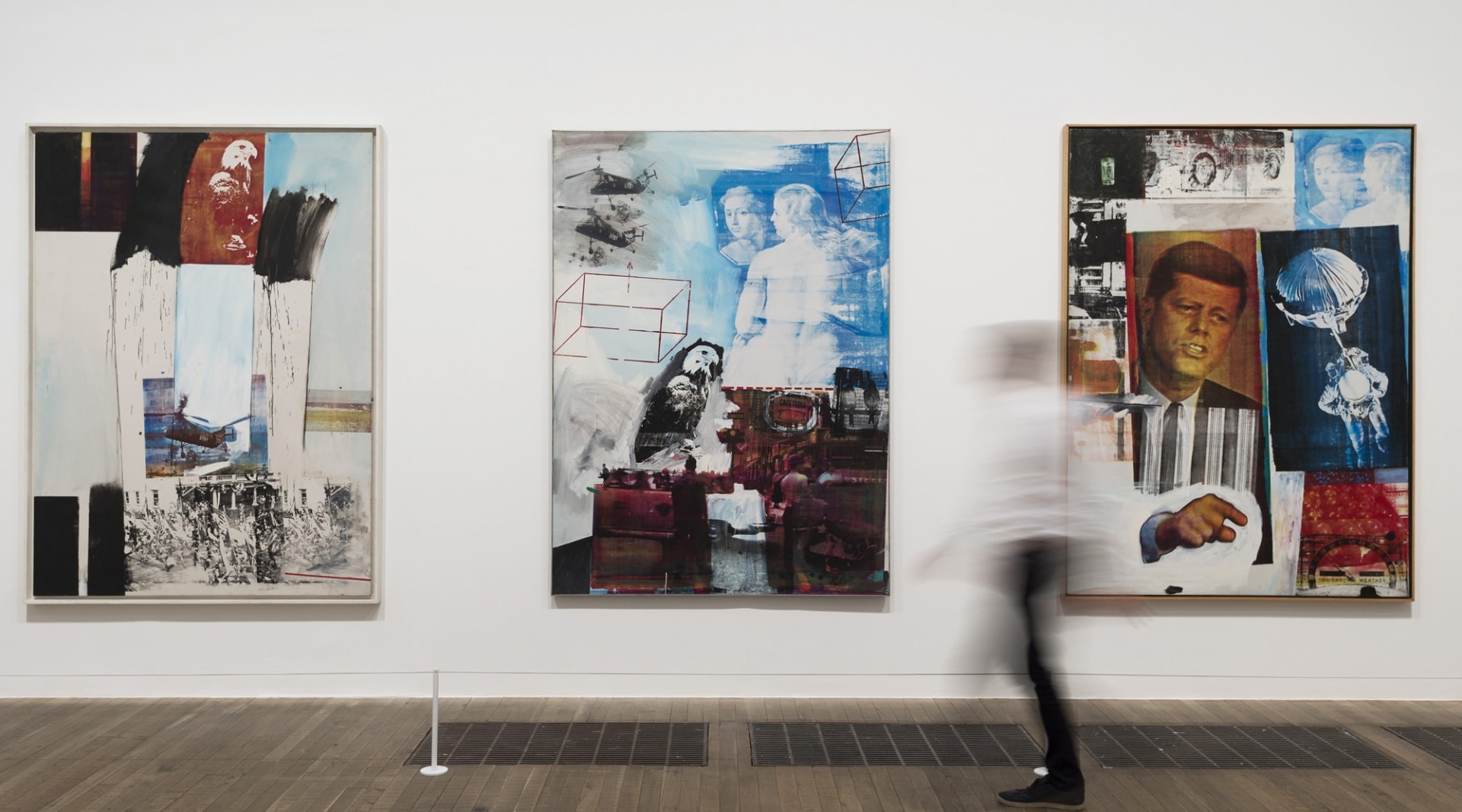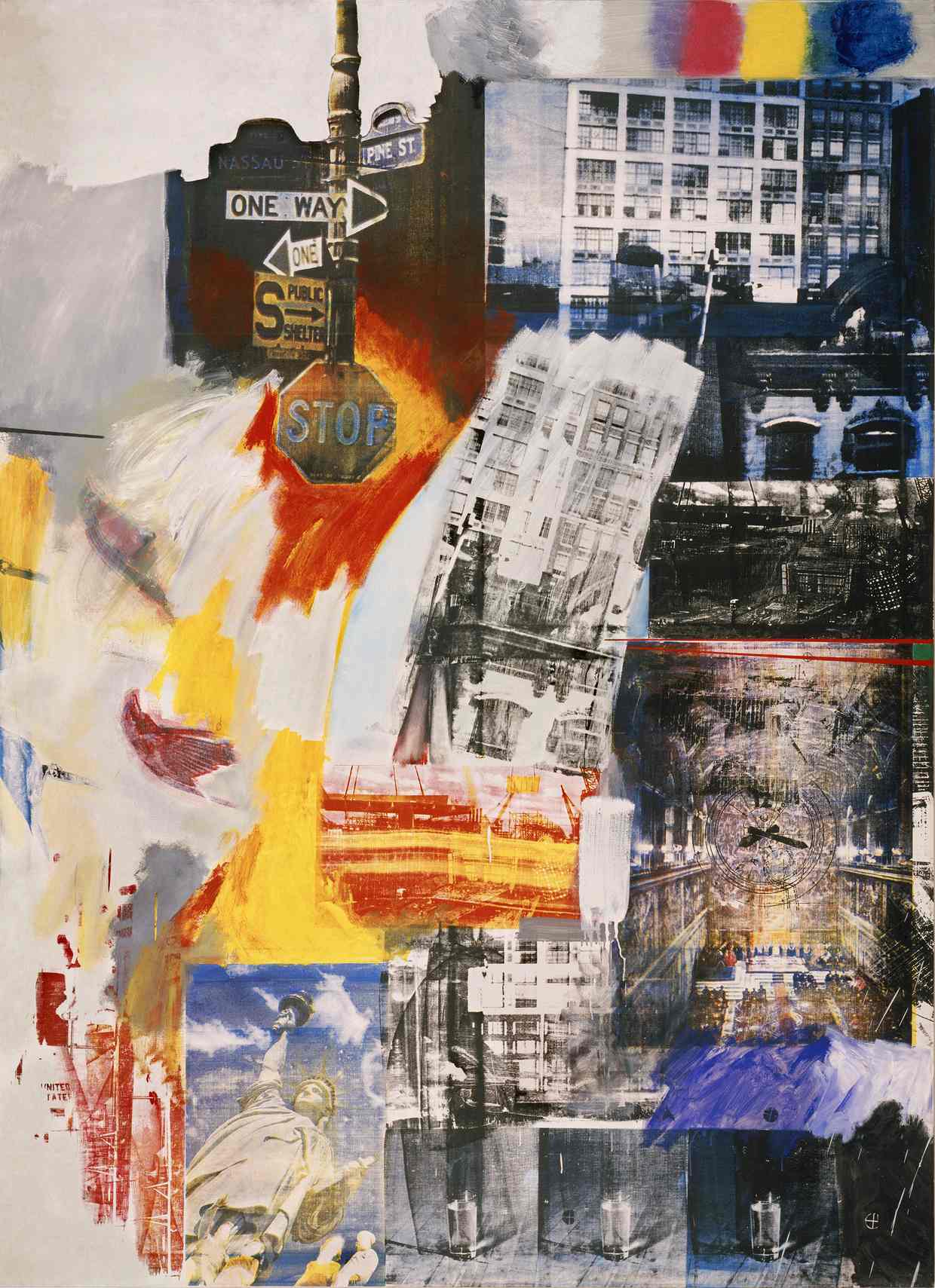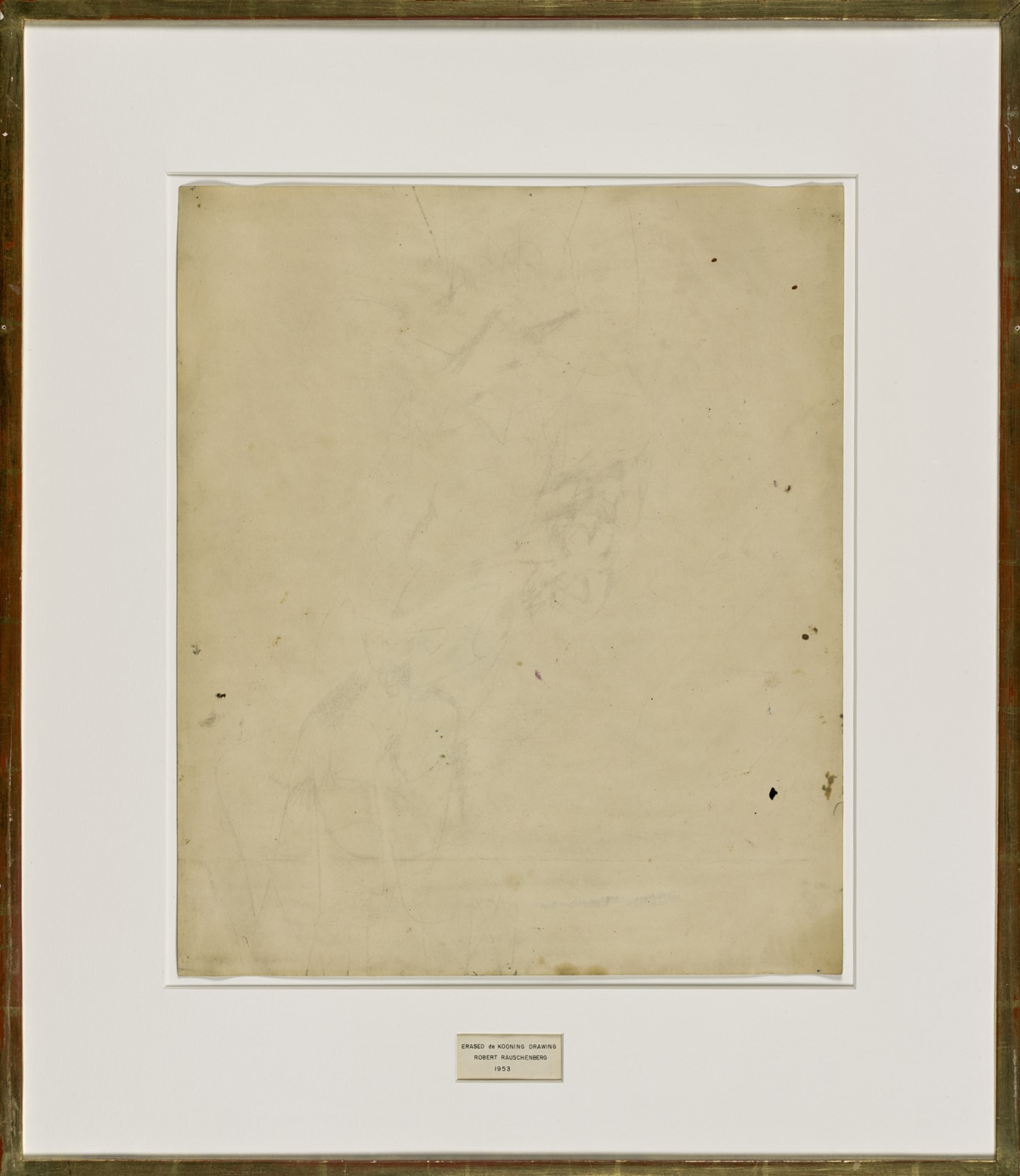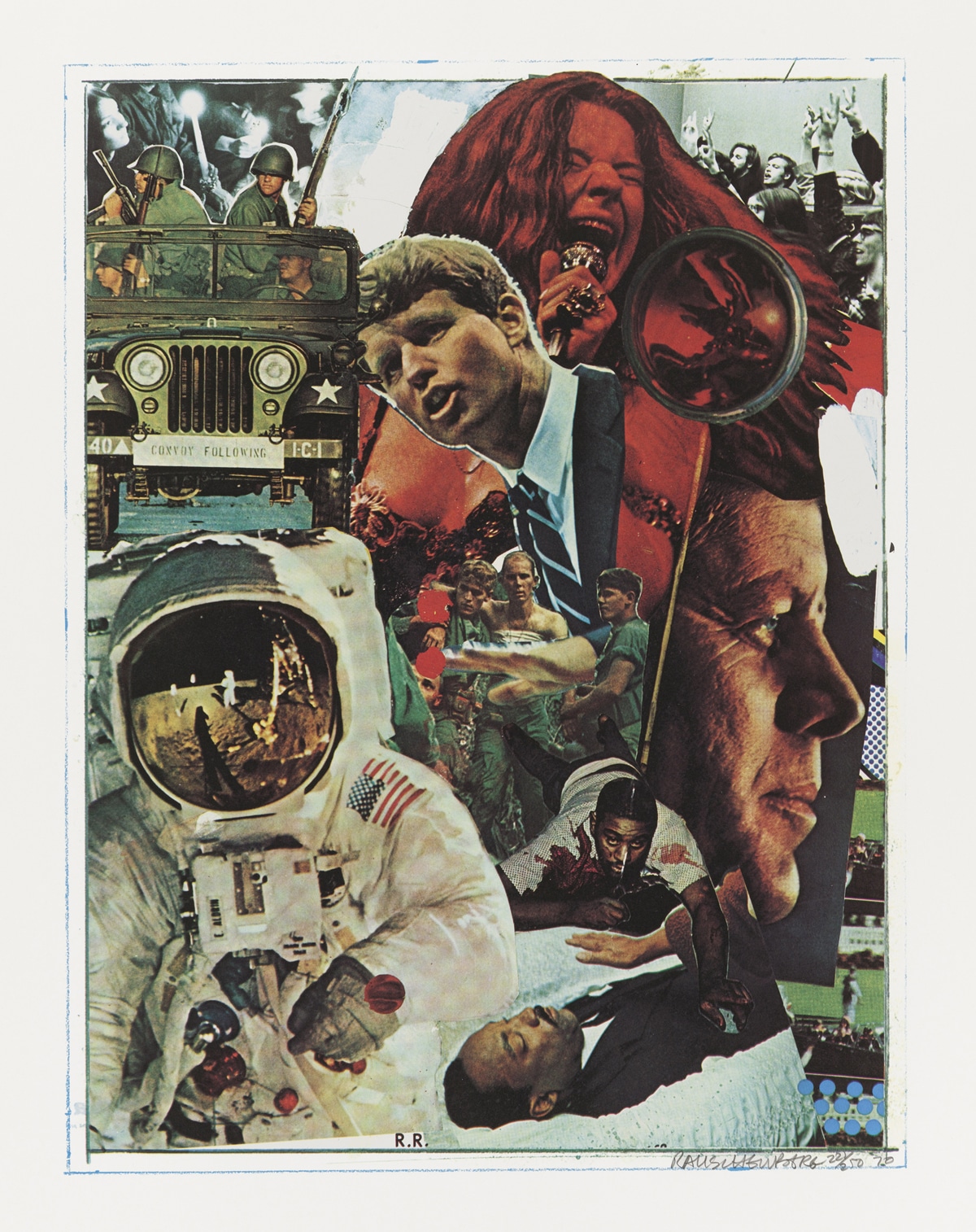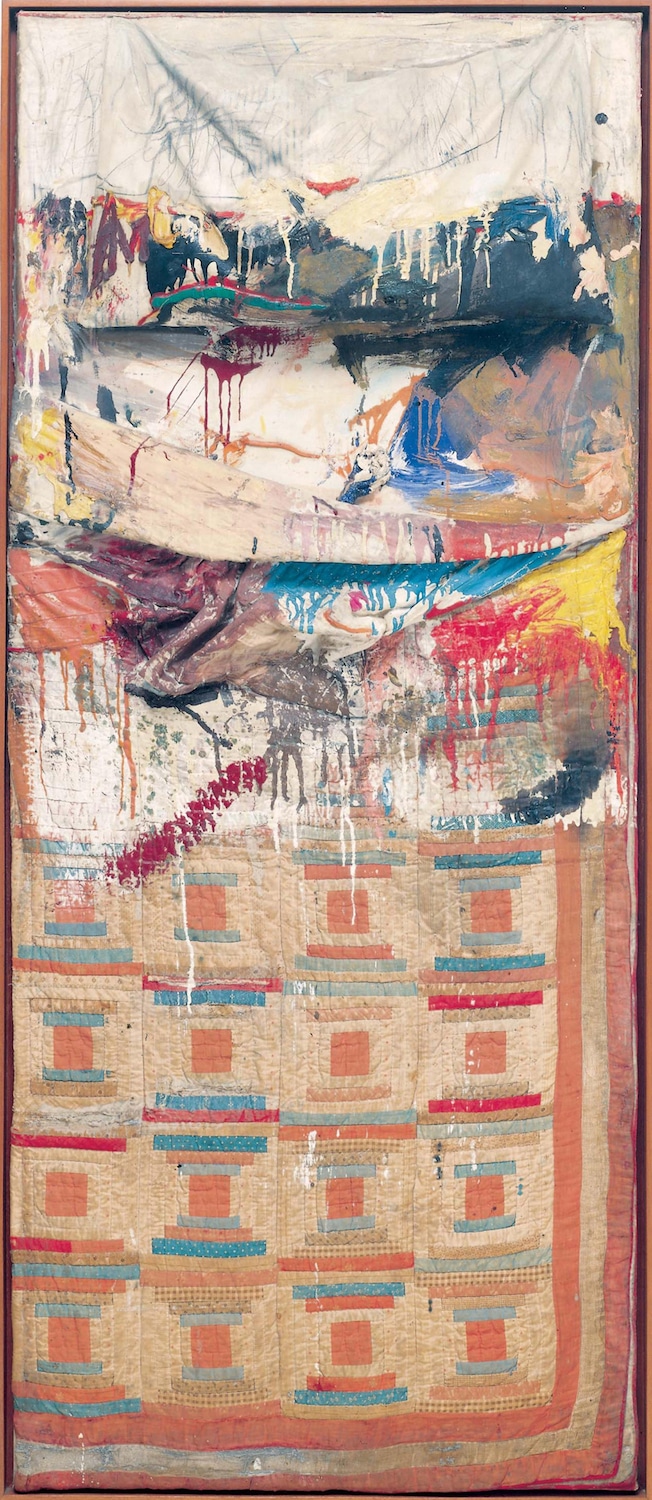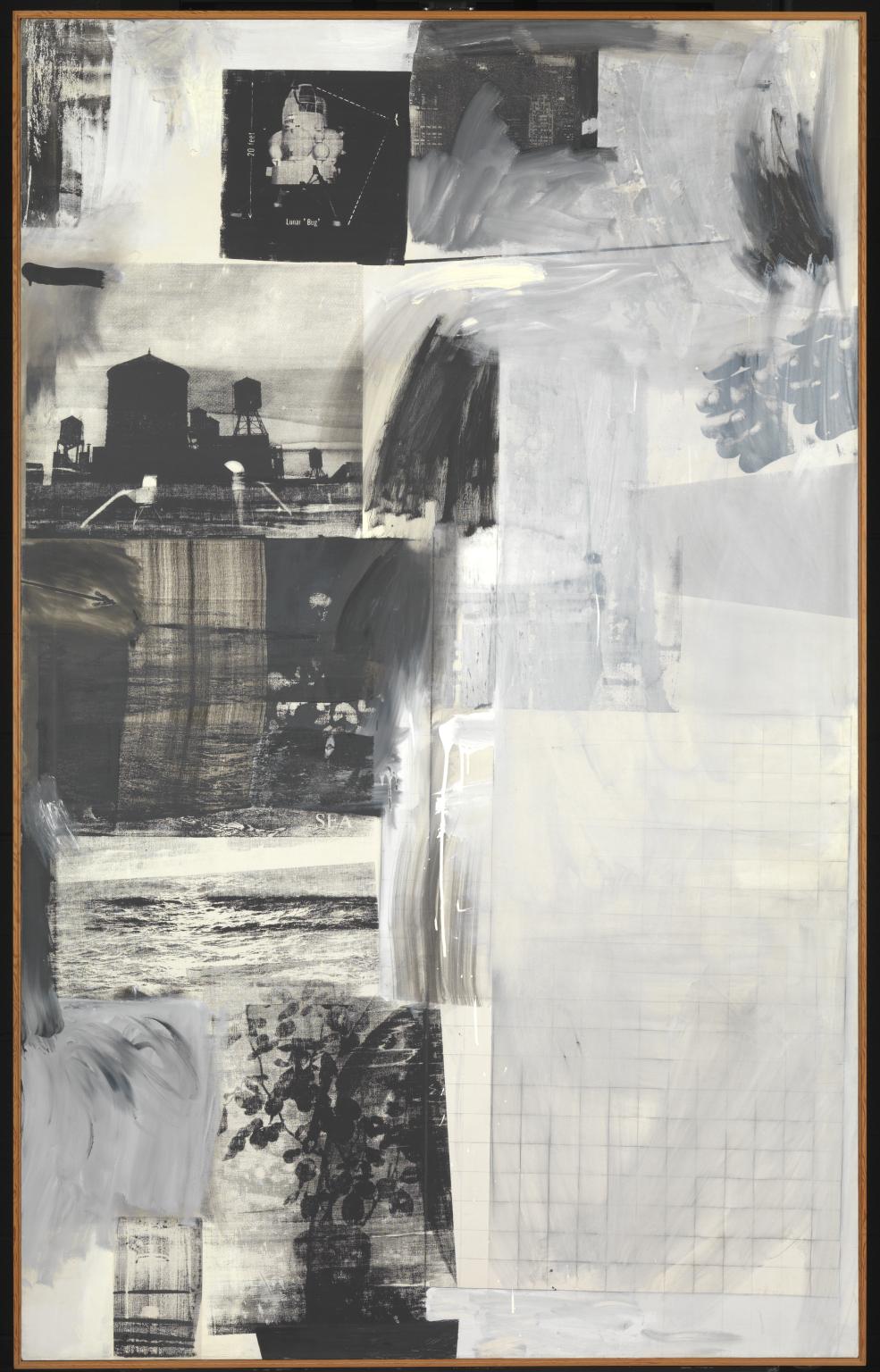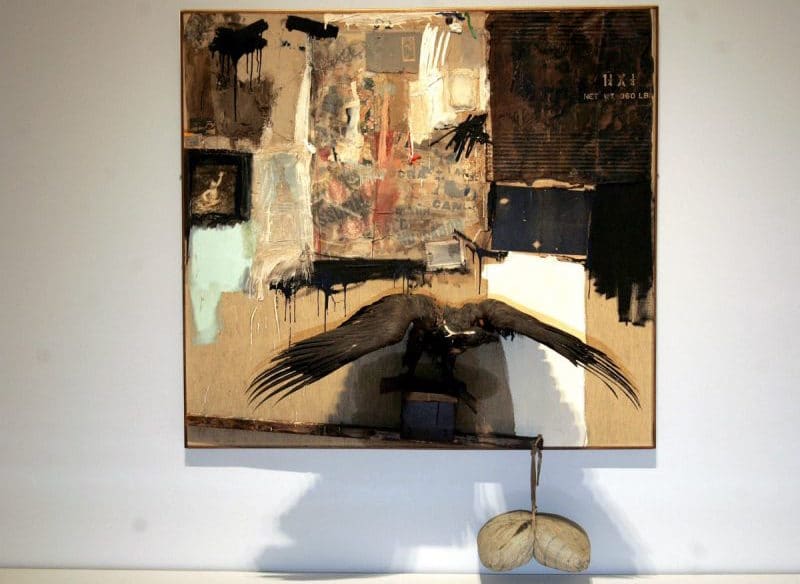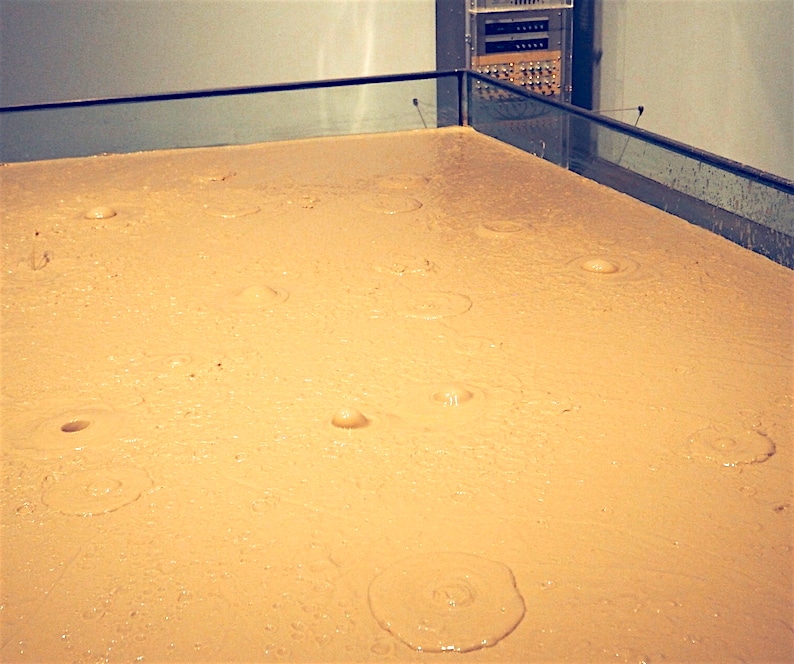‘I don’t want a picture to look like something it isn’t. I want it to look like something it is. And I think a picture is more like the real world when it’s made out of the real world.’
Robert Rauschenberg
Robert Rauschenberg is best known as a key figure in the American pop art movement. It is here that he stands alongside Andy Warhol as creators what we today recognise as the ‘look’ of pop art; an anything goes aesthetic culled from the rapidly changing real world.
This is however a very limited view of Rauschenberg; a major figure of influence across many branches of contemporary art for over 50 years, and the real power of this exhibition lies in demonstrating the astonishing breadth of Rauschenberg’s creativity.
Organised in collaboration with The Museum of Modern Art in New York, it will travel onwards to MoMA and SF MoMA in 2017, and is remarkably, the first posthumous retrospective as well as being the most comprehensive survey of the artist’s work for 20 years.
From his early engagement with pop to his works produced at the dawn of the twenty-first century, Robert Rauschenberg blazed a new trail for art. Moving between painting, sculpture, photography, print-making, technology, stage design and performance, he refused to accept conventional boundaries in art and in life. Rauschenberg’s quest for innovation was fired by his openness to the world, his enthusiasm for collaboration and his passion for travel.
Each chapter of Rauschenberg’s career is represented by impressive international loans of key works that rarely travel. Among these is a selection of his iconic Combines plus the signature silkscreen paintings that bring politics, mass media imagery and street scenes into his work.
The exhibition begins with early experiments at Black Mountain College, a hotbed for innovation in the late 1940s and early 1950s where, inspired by Bauhaus export Josef Albers love of materials, he embarked on his first collaborations with fellow artists and friends like John Cage, Merce Cunningham, Jasper Johns and Cy Twombly.
Where the opening works of most monographic exhibitions merely hint at future greatness, here one is immediately struck by the stunning originality and quality. He created cyanotype self-portraits on light-sensitive paper, made sculptures from scrap, painted with dirt and had John Cage drive an inked car tyre over lengths of white paper.
Soon he was badgering big name abstract expressionist Willem de Kooning for a work which he impudently then spent weeks carefully erasing. With one simple action the signalled ‘out with the old and in with the new’, the primacy of painting forgotten. The inventiveness is continuous; in room after room there is a shift in direction, changes in medium and new stylistic angles.
His art used what was around him, repurposing and recontextualising. These are the ‘combines’, one with just painted bedding and others incorporating handkerchiefs, umbrellas and newspapers, another of course with a goat in a tyre. Elsewhere he paints two almost identical paintings just to see how different ‘sameness’ can be. There is a room of transfer drawings, using solvent to transfer print to canvas, before silk screens collage divergent imagery including the recently assassinated President Kennedy.
A key aspect of this show is the performance and dance aspect ion his work. One moment Rauschenberg is in the studio, the next he is painting on stage with Merce Cunningham. We discover that after being accidentally credited as a choreographer, he thought ‘why not’, creating Pelican, in which he roller-skated on stage, parachute-clad and circling dancer Carolyn Brown.
Age did not slow his creativity. He collaborated with dance companies, founded Experiments in Art & Technology (EAT) to develop collaborations between artists and engineers – we see for example a pool of noisy bubbling mud activated by its own noise. He then travelled extensively across Europe, the Americas and Asia in the epic project Rauschenberg Overseas Culture Interchange (ROCI); a travelling exhibition which took place between 1984 and 1991 taking in Chile, China, Cuba and Tibet.
Moving with the times Rauschenberg was a giant of 20th century art profoundly influencing the art world. This is a fine exhibition, comprehensive and well researched. See it at least once.
Robert Rauschenberg is at Tate Modern until 2 April 2017.
The exhibition travels to MoMA and SF MoMA.
For more information visit www.tate.com.




